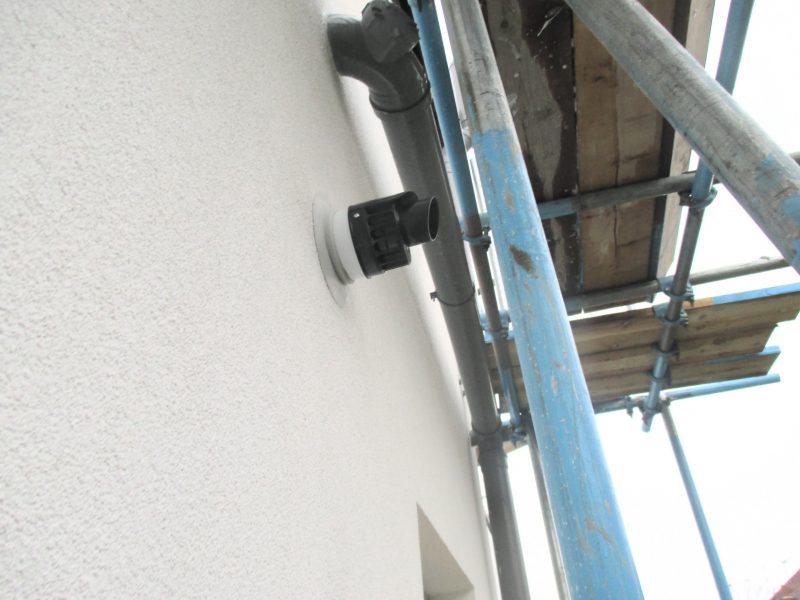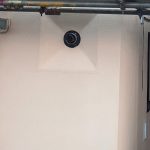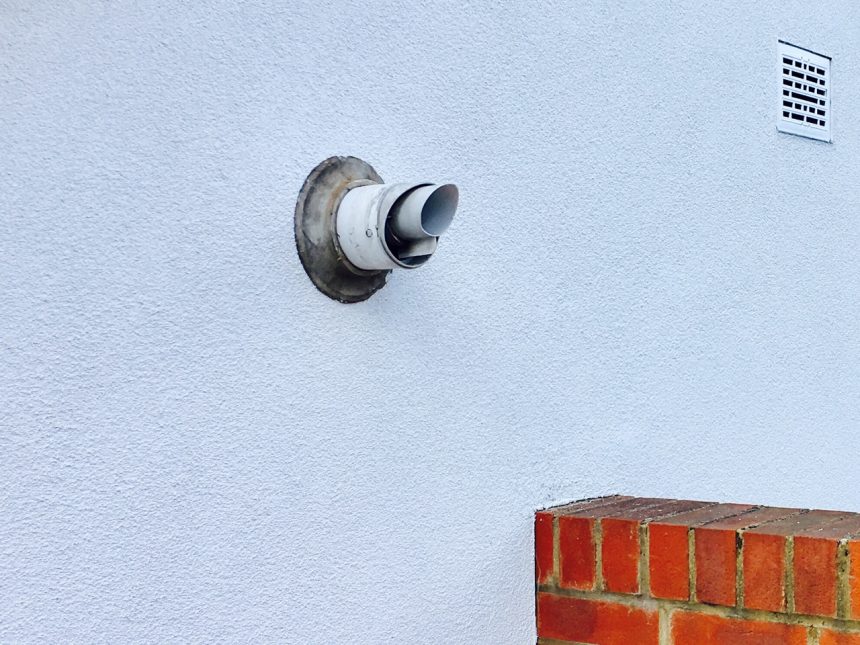Dealing with boiler flues
Boiler flues can be seen on most properties that are on the gas grid. You might see them protruding from the wall, sticking out of the roof, or stuck in an outbuilding. When it comes to EWI, boiler flues can be a real stumbling block. In this blog, we are going to look at some of the common problems and how we deal with flues.

What is the problem with flues?
Most boiler flues that protrude from a wall only do so just enough to ensure that the flue is not obstructed. After all, no one wants a long plastic pipe sticking out from the wall. External Wall Insulation (EWI) can add a layer 100mm or more to the outside of the house, and this has obvious implications for the ability of the flue to function. If the flue is even slightly buried in the wall, it can stop the boiler from functioning properly, and could in the worst case scenario cause carbon monoxide building up in the home.
Obstructing the flue is therefore not an option, and a suitable solution must be found.
Why do I need to move my boiler flue?
Boxing around the flue

One cheap and easy way to finish around the flue is to not touch the flue itself, but to leave a space of 30cm or more from the flue to the insulation. This creates a recess, as shown in the photo, which is a big enough gap to ensure the flue can operate safely, whilst still insulating the vast majority of the wall.
It is also possible to bevel the insulation slightly to create a graded and more subtle dishing effect around the flue. This technique is often used where the cost of extending the flue is considered too high or prohibitive, or where it is not possible to extend the flue (due to an obsolete part for example).
Extending the flue
The alternative to boxing around the flue is to extend the flue so that it is level with the new wall depth. A gas safe plumber will be required to extend the flue using the appropriate manufacturers flue extension kit. The process is relatively simple and usually adds around £150-200 to the average job.
This is preferable to boxing around the flue because it looks neater, leaves a smooth and clean finish, and will not create a surface for dirt and grime to collect.
Mineral Wool is a must around the flue
One more important thing to remember with flue extensions is to ensure you have some Rockwool or Mineral Wool around the flue when it is extended. Of course, if you are using this product for the insulation on the house anyway, then this goes without saying, but if you are planning to use EPS insulation then you must be very careful with the insulation used around the flue. The flue can get hot and potentially melt the EPS on the wall, whereas Rockwool has a much higher melting point and is therefore more suitable for use around the flue.
The flue is a important when doing external insulation, so make sure you are dealing with it in the best way possible. If in doubt, speak to the experts at Be Constructive!
- WHAT DOES THE CUSTOMER HAVE TO DO TO PREPARE THE PROPERTY FOR SOLID WALL INSULATION?
- NSULATING HOMES AND LOWERING ENERGY BILLS
- EXTERNAL WALL INSULATION COST?















3 comments
Your contents are too straightforward to browse and easy to understand. Thanks for describing an informative post in such a fine manner.
Amazing article, You have explained every point in a good manner and in a efficient way. The ideas are amazing and content is good.
Keep it up.
Great article, information provided are valuable. Points are described in a good and easy way.
Thanks for sharing this article.